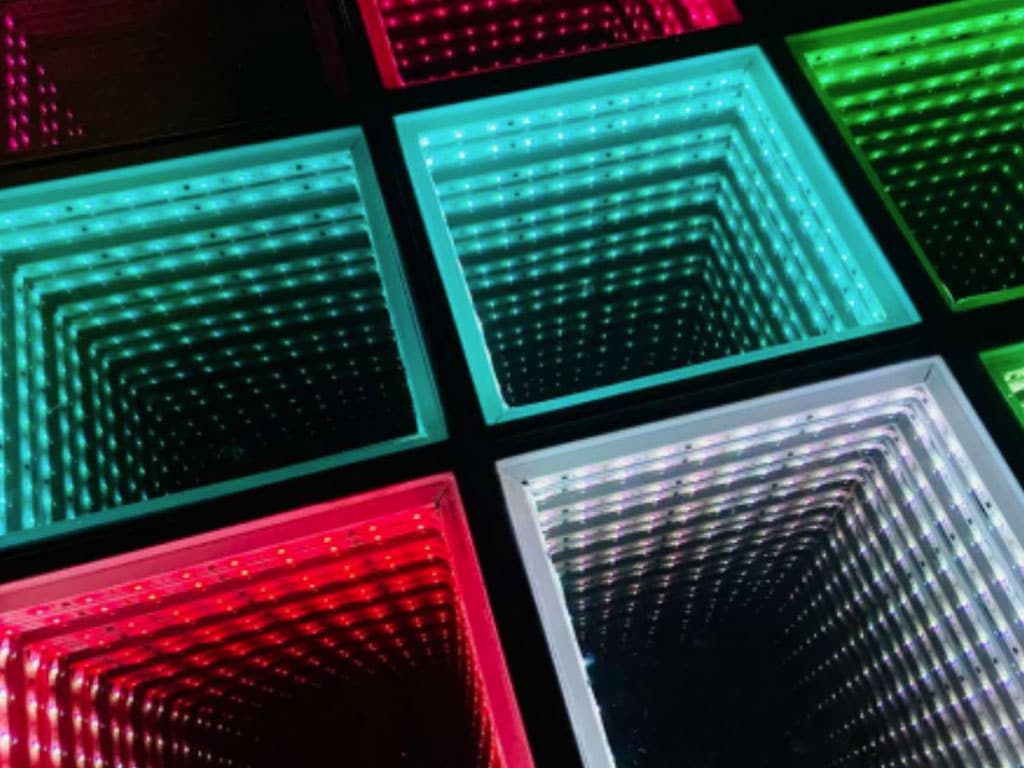Quantum computing is taking another leap with the design of a new router that allows qubits more connectivity.
Scientists designed a router that can bridge several qubits simultaneously — a win for the emergent field of quantum computing as it removes boundaries drawn by the classic two dimensional grid on which these units are distributed.
Qubits, which store data for the system in a sort of computer language, are typically arranged on circuits within a quantum computer in a structure similar to a spreadsheet, with each four-way intersection representing one unit. While neatly organized, the pattern only allows qubits to interact with a direct neighbor.
But along with a team of experts, co-inventor Michael J. Hatridge, assistant professor in the Department of Physics and Astronomy at the University of Pittsburgh, developed a router that circumvents the 2D pattern’s reliance on proximity. It connects qubits by use of frequency waves, not too far off from the way typical Wi-Fi routers work.
“They’re connected in such a way that we can connect one at a time or two at a time — we can connect them in parallel,” Hatridge told The Academic Times. “It’s not the sort of rigid structure of connecting only to a certain number of neighbors — everybody connects to everybody.”
The work was funded by the U.S. Air Force, an institution interested in quantum computations for military purposes. Hatridge’s patent application for the system was published by the World Intellectual Property Organization on May 14.
“The thing that has really been the biggest source of excitement in my laboratory,” he said, “is that the way we figured out how to build it was actually [with] technology we designed for a completely different project called parametric amplification.”
The team’s interest in translating that project to qubits spurred from the quantum circuit restrictions. For a qubit in the 2D array to share information with another beyond its nearest neighbor, it must partake in a swapping mechanism that preserves the laws of quantum mechanics, which are the foundation for why quantum computing promises to be a giant leap forward for humanity.
From the first, extremely simple two-qubit prototype of a quantum computer presented in 1998, to IBM’s more complex version meant for scientific or commercial use introduced just over 20 years later, quantum computing has taken the tech world by storm.
These systems are thought to tackle problems that cannot be solved by classical algorithms — for example, modeling extremely complex molecules for drug development, teaching artificial intelligence to learn like humans and predicting weather even through Mother Nature’s random fluctuations. In 2019, for instance, Google’s quantum computer prototype solved a highly complicated equation in 200 seconds. With even the most powerful classical computers, it would have taken about 10,000 years.
And if a quantum internet is able to connect the computers one day, the field could even lead to unhackable cybersecurity measures due to the properties of the quantum domain, namely superposition and entanglement.
“One of the areas that I’m eager to do more research and try to figure stuff out about is how we would shape the connections to be more or less optimal for some particular algorithm that’s of interest to people,” Hatridge noted.
Rather than possess a single state, like classical particles, quantum particles exist in superposition. Although classical systems do not exhibit quantum laws, an apt non-quantum analogy would be the way wearing 3D glasses offers a superimposed visual in red and blue: Looking through only one lens would not provide the same information as is found with both.
The equivalent of isolating one colored lens in the quantum world would be like checking to see whether a particle’s state is spin up or spin down. Unlike the ease of re-wearing the glasses to return to the superimposed image, such validation in the quantum domain would prevent the superposition from occurring again.
That means qubits — existent in a superposition of 0 and 1 — must transfer information without being interrupted; otherwise, the precious data that makes quantum computing a potentially monumental achievement would be lost. To do this, the grid-like pattern on quantum circuits requires very close encounters between the storage units.
“If you’re trying to do an interaction between two qubits that are five neighbors away,” Hatridge explained of the grid-like organization,”you have to swap the quantum state … and take it next to the qubit you want to interact with.”
After however many swaps are needed to reach a given qubit, the quantum state of the original qubit performs an entanglement operation. This concept allows quantum particles to sync with each other such that the state of one depends directly on the state of another, meaning information can be shared without collapsing the system into a classical state. The connection remains even if the particles are found at other ends of the universe.
But, due to the proximity issue, simultaneous qubit interactions aren’t really possible, limiting the power of a quantum computer.
“The particular hardware I built is designed to connect stuff that’s close together,” Hatridge said. “It’s just a question of how you build these links between qubits that are not just two qubits right next to each other.”
Like the way usual Wi-Fi routers link several channels together, the team’s router is able to place a qubit’s information — in superposition — into a certain frequency wave via photons, or light particles. Not only is each frequency unique, but the differences between each frequency are, too.
“The shape that we’re trying to build looks — instead of like a regular grid — it looks like a tree,” Hatridge said. “Imagine the qubits are the leaves, and then it’s like many leaves to one twig, many twigs to one branch, and the branch to one trunk — they’re much closer together than if you put all the leaves on a regular grid and only connected to nearest neighbors.”
This is how parallel entanglement becomes possible. The unique variations between frequencies allow one to drive the photons with just enough energy to hop from one qubit to the next, but not so much energy that the superposition is interrupted, Hatridge explained.
“We have a whole bunch of switches that we can turn on in parallel, or one at a time, and we control them by just which frequency we drive,” he said. “It’s kind of an associative process, like A is connected to B and B is connected to C, therefore A is connected to C — the modules, they’re not connected directly to each other — they’re connected through this bridge.”
The patent application, ”Parametrically-driven coherent signal router for quantum computing and related methods,” was filed July 9, 2020 with the earliest priority date of July 13, 2019. It was published by the World Intellectual Property Organization on May 14 with the application number PCT/US2020/041342. The earliest priority date was Sept. 13, 2019. The inventors listed are Michael Jonathan Hatridge, David Pekker and Roger Mong. The applicant listed is University of Pittsburgh – of the Commonwealth System of Higher Education.
The article, “Quantum computing advancement reinvents how qubits share their delicate data”, written by Monisha Ravisetti was first published in the Academic Times. Parola Analytics provided the technical research for this story.






